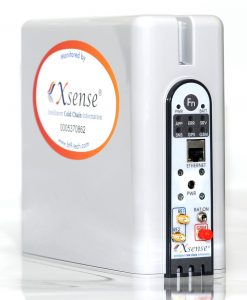Data transmission by type of Datalogger
Xsense works with a variety of dataloggers suited to different requirements. A key difference between types of dataloggers is the means by which data is retrieved from the dataloggers.
| RF | Cellular | Bluetooth (BLE) | Manual | ||
| Xsense® HiTag™ | RF @ 433 MHz via Xsense® Wireless Gateway | ||||
| Xsense® Cellular Real-time | 2G | ||||
| Xsense compatible USB dataloggers | USB |
- Data on Xsense® HiTag™ dataloggers can be read by Xsense® wireless gateways (aka CUs). The gateways relay the data collected from the tags to Xsense® Cloud.
- Data on Xsense®-compatible all-in-one cellular real-time dataloggers is automatically transferred to the Xsense® Cloud whenever the dataloggers are connected to the cellular network.
- Data on select USB dataloggers may be exported to one’s computer and then be uploaded to Xsense® Cloud via the Xsense® web portal.


